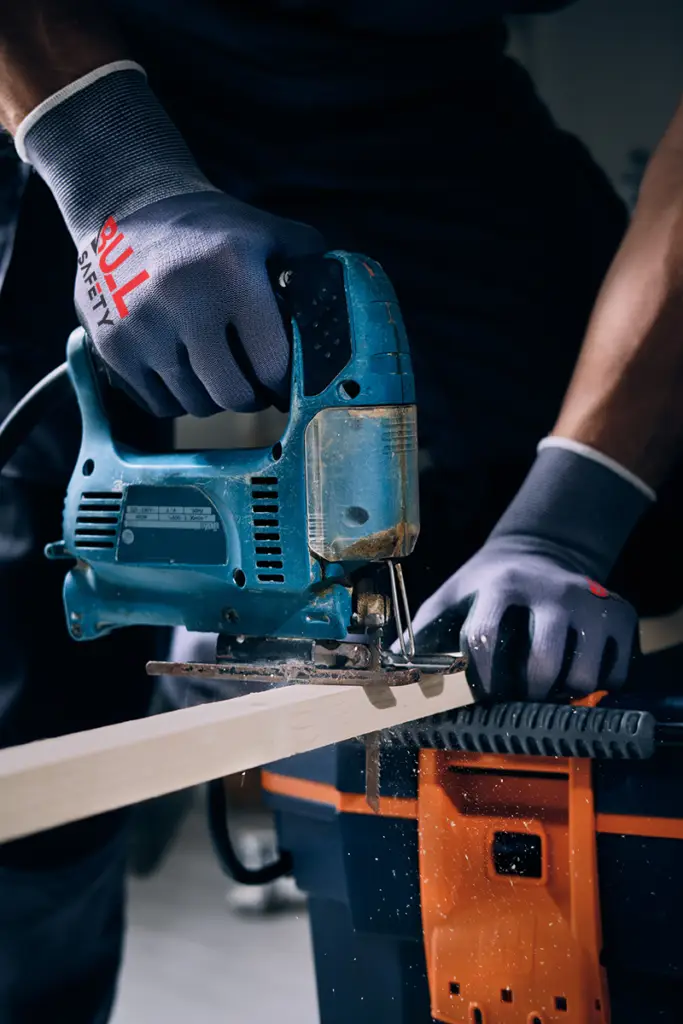
Bullsafety general purpose gloves
After spending over 30 years in the glove manufacturing industry with my brand, BULLSAFETY, I’ve seen firsthand how important general purpose gloves are. Many workplaces rely on them for basic hand protection1, but are they really necessary?
Yes, general purpose gloves are necessary because they provide essential protection for a wide range of tasks, such as handling tools, materials, or equipment. They help protect hands from cuts, abrasions, and other injuries, ensuring safety and comfort during everyday work.
✅ They reduce hand fatigue, minimize abrasions, and improve grip for tasks like light assembly, warehouse work, and material handling.
I remember a customer, Jason from Canada, who worried about minor injuries in his factory. After testing our nitrile-coated gloves2, he realized they offered excellent grip, durability, and protection. He also appreciated that our gloves met CE and Oeko-Tex certification standards3, giving him confidence in their quality.
Choosing the right general purpose gloves helps prevent injuries, increases worker comfort, and improves productivity. I always advise PPE buyers to select gloves based on their work conditions, coating types, and certification requirements.
What Are General Purpose Gloves?
Many people confuse general purpose gloves4 with specialized ones. But general purpose gloves are designed for everyday workplace tasks5, such as light assembly, material handling, and warehouse operations6.
✅ General purpose gloves protect against minor cuts, dirt, and slips. Made from materials like nitrile, latex, or PU, they are commonly used in warehouses, manufacturing, and general handling tasks.

Features and Uses
General purpose gloves are lightweight, comfortable, and coated for better grip7. Unlike specialized gloves designed for chemical protection or high-impact resistance8, these gloves focus on flexibility and moderate protection.
🔹 Best for: Warehouses, packaging, logistics, construction sites, and general industry tasks.
🔹 Common materials: Polyester, nylon, or cotton blends with different coatings.
🔹 Coating options: Nitrile, latex, PU9—each offering different levels of grip, flexibility, and resistance.
How Many Types of General Purpose Gloves?
I’ve noticed buyers often confuse glove types when selecting the right ones. The key is understanding coating types and their intended uses.
✅ There are four main types of general purpose gloves: nitrile gloves (resistant to oils and chemicals), latex gloves (provide elasticity and dry grip), PU gloves (offer flexibility and precision handling), and blended material gloves (for multi-use protection across various tasks).

Understanding the Variations
| Glove Type | Best For | Key Benefit |
|---|---|---|
| Nitrile-Coated | Oil handling, slight chemicals | Resistant to oils and mild chemicals |
| Latex-Coated | Dry object handling, grip tasks | Elastic and strong grip |
| PU-Coated | Precision handling, electronics | High flexibility and dexterity |
| Blended Gloves | Multi-task environments | Mixed protection features |
Each of these coatings serves different workplace needs. I often help customers choose based on industry, comfort, and required safety levels.
How to Choose the Right General Purpose Gloves for Your Work?
I know that picking the right gloves can feel overwhelming. The best approach is to consider the tasks you perform, the risks involved, and the necessary certifications.
✅ To choose the right general purpose gloves, consider the type of work. For oily tasks, choose nitrile gloves; for dry handling, go for latex; and for precision tasks, select PU gloves. Make sure the gloves fit well, check for safety certifications like CE or ANSI, and confirm timely delivery from your supplier.
Selecting the Best Fit
Here’s my simple checklist to help you choose the right gloves:
1️⃣ Identify the work hazards – Are you dealing with oil, dust, or light mechanical risks?
2️⃣ Choose the right coating – Nitrile for oil, latex for dry grip, PU for precision.
3️⃣ Ensure proper fit and comfort – Gloves should not be too tight or too loose.
4️⃣ Check safety certifications – Look for CE, ANSI, and Oeko-Tex certifications.
5️⃣ Verify supplier reliability – Ensure they have enough production capacity to avoid delays.
Conclusion
General purpose gloves are a cost-effective and essential choice for workplace safety. They help reduce hand fatigue, prevent minor injuries, and improve worker efficiency.
✅ With the right materials and coatings, they provide grip, comfort, and durability for tasks like material handling, warehouse operations, and general industry work.
For any PPE buyer, choosing gloves with proper certification, fit, and supplier reliability ensures long-term safety and efficiency.
🔗 Shop certified general purpose gloves here
-
Understanding the benefits of basic hand protection can help you make informed decisions about safety gear for your workplace. ↩
-
Explore the advantages of nitrile-coated gloves to see why they are a popular choice for safety and comfort in various industries. ↩
-
Learn about CE and Oeko-Tex certification standards to ensure the safety and quality of the products you choose for your workplace. ↩
-
Explore this link to understand the various applications and benefits of general purpose gloves in different industries. ↩
-
Discover how general purpose gloves enhance safety and efficiency in daily tasks across various work environments. ↩
-
Learn about the critical role gloves play in ensuring safety and productivity in these specific tasks. ↩
-
Explore how lightweight and coated gloves enhance comfort and grip for various tasks, making them ideal for everyday use. ↩
-
Understanding the distinctions can help you choose the right gloves for specific tasks, ensuring safety and efficiency. ↩
-
Learn about the unique properties of each coating type to select the best gloves for your needs and tasks. ↩



